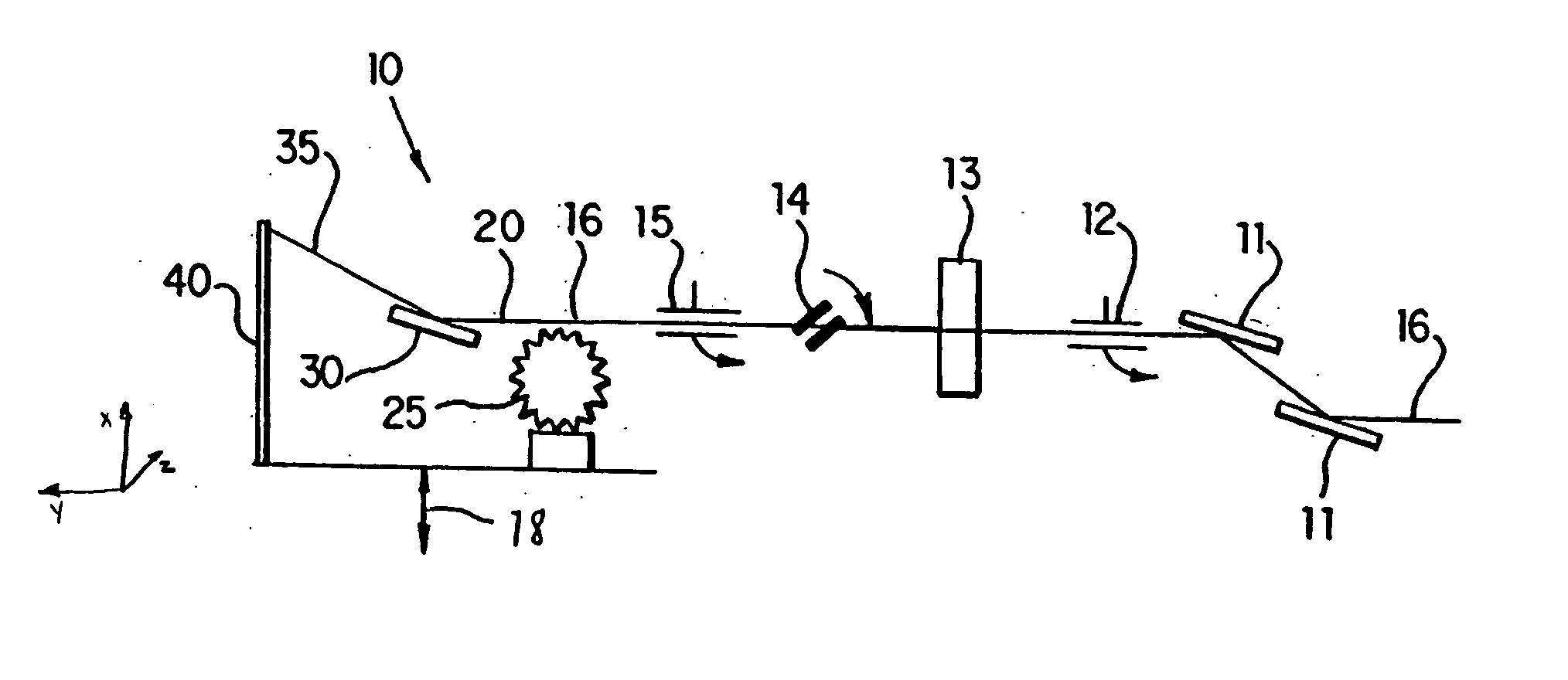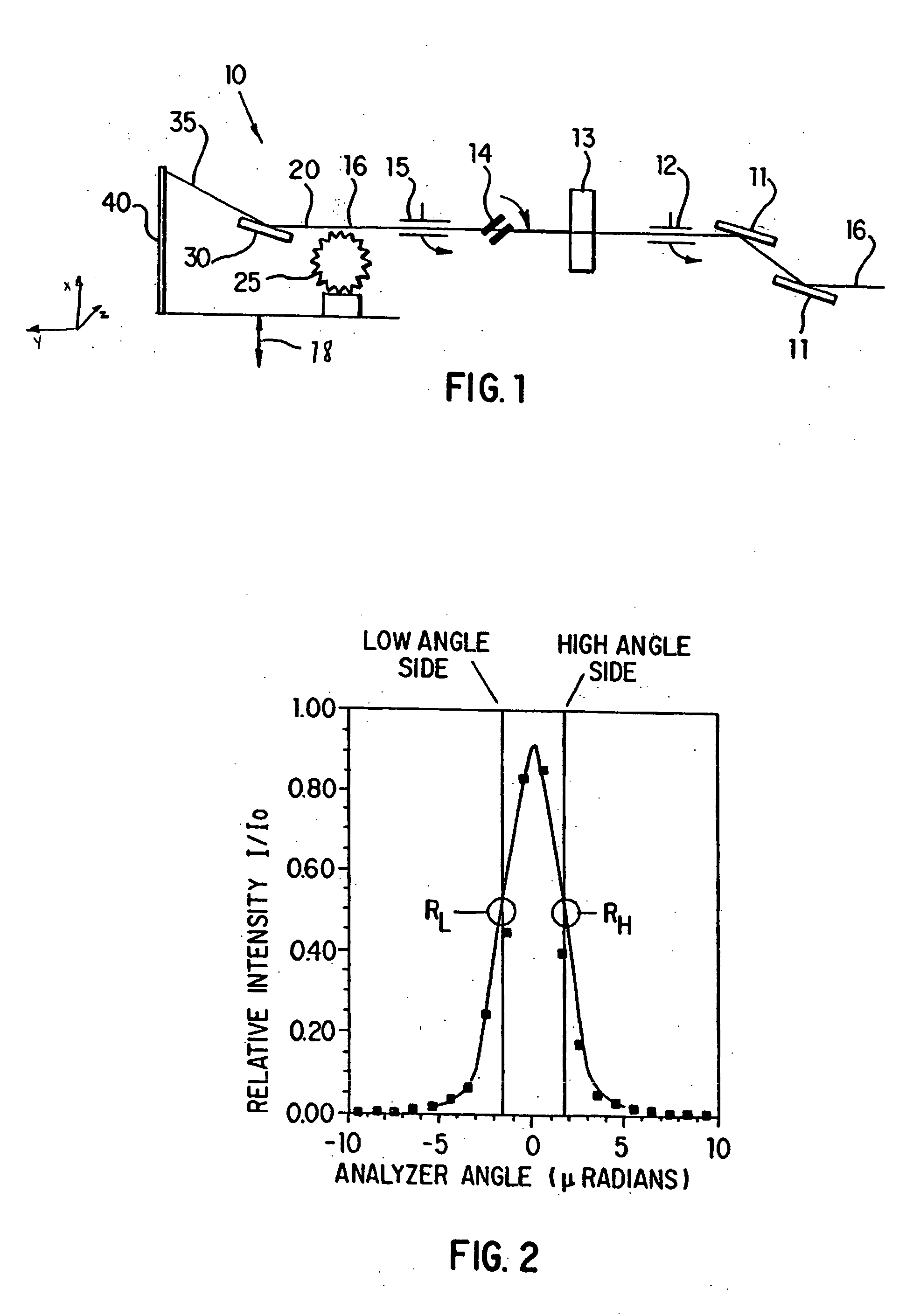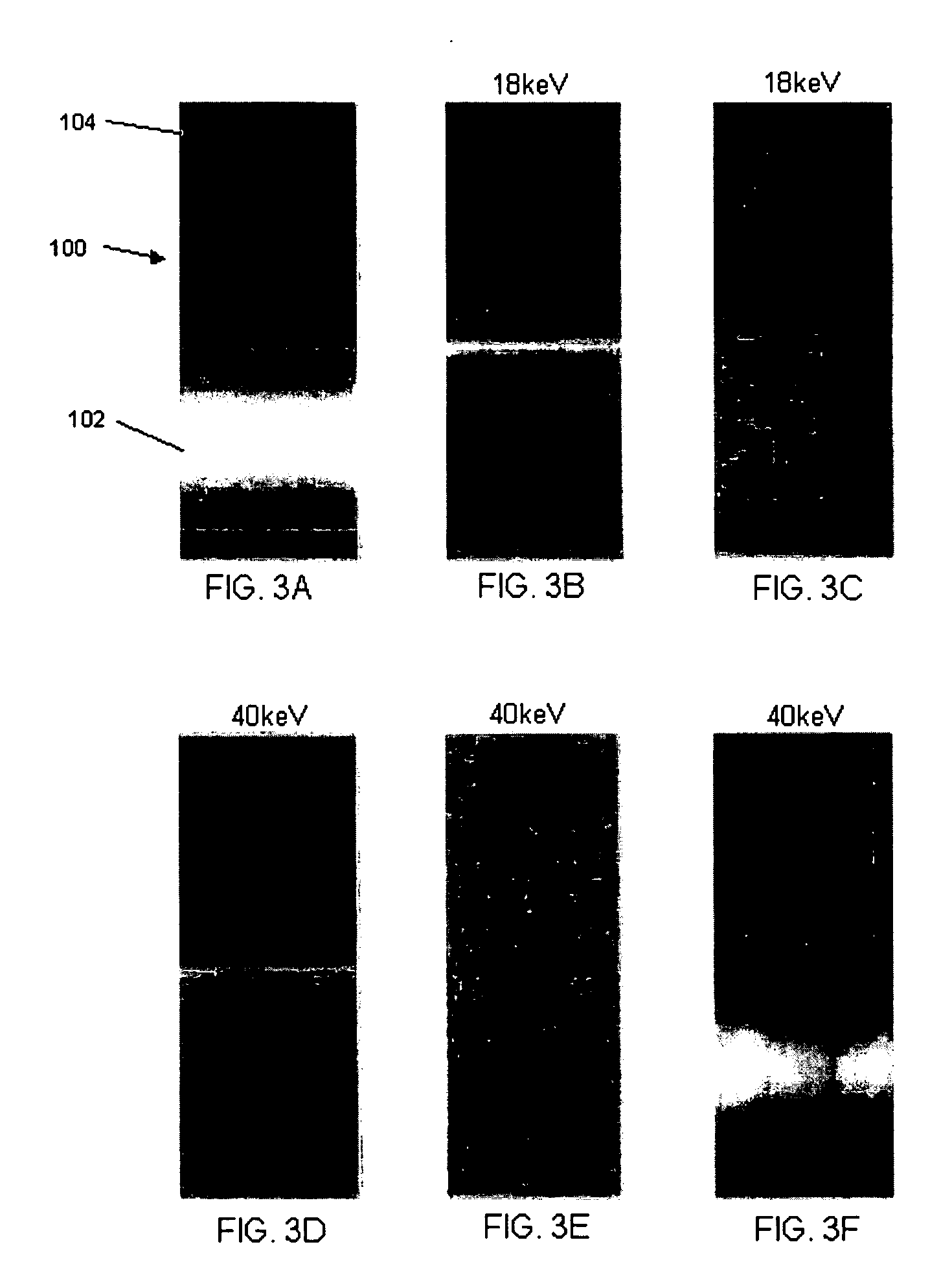Method for detecting a mass density image of an object
a mass density image and object technology, applied in material analysis using wave/particle radiation, instruments, nuclear engineering, etc., can solve the problems of limited acceptance of dei by radiologists and loss of good absorption-based radiographs, and achieve better signal-to-noise ratios, reduce x-ray doses, and reduce radiation doses
- Summary
- Abstract
- Description
- Claims
- Application Information
AI Technical Summary
Benefits of technology
Problems solved by technology
Method used
Image
Examples
Embodiment Construction
[0025] One method of this invention provides a mass density image of an object. The mass density image shows contrast features of an object, similar to conventional radiography, without relying on the absorption of x-rays by the object. The mass density image of an object is obtained through an image processing algorithm used on images based on refraction characteristics of the object, such as refraction images obtained by Diffraction Enhanced Imaging (DEI). The mass density image of this invention can be obtained through DEI such as, for example, the x-ray imaging method disclosed in U.S. Pat. No. 5,987,095 issued to Chapman et al. and / or in U.S. Pat. No. 6,577,708 issued to Chapman et al., the entire disclosures of which are incorporated into this specification by reference.
[0026]FIG. 1 shows a schematic diagram of an analyzer system 10, according to one preferred embodiment of this invention. FIG. 1 is similar to the crystal analyzer system shown in FIG. 1 of U.S. Pat. No. 5,987,
PUM
 Login to view more
Login to view more Abstract
Description
Claims
Application Information
 Login to view more
Login to view more - R&D Engineer
- R&D Manager
- IP Professional
- Industry Leading Data Capabilities
- Powerful AI technology
- Patent DNA Extraction
Browse by: Latest US Patents, China's latest patents, Technical Efficacy Thesaurus, Application Domain, Technology Topic.
© 2024 PatSnap. All rights reserved.Legal|Privacy policy|Modern Slavery Act Transparency Statement|Sitemap



